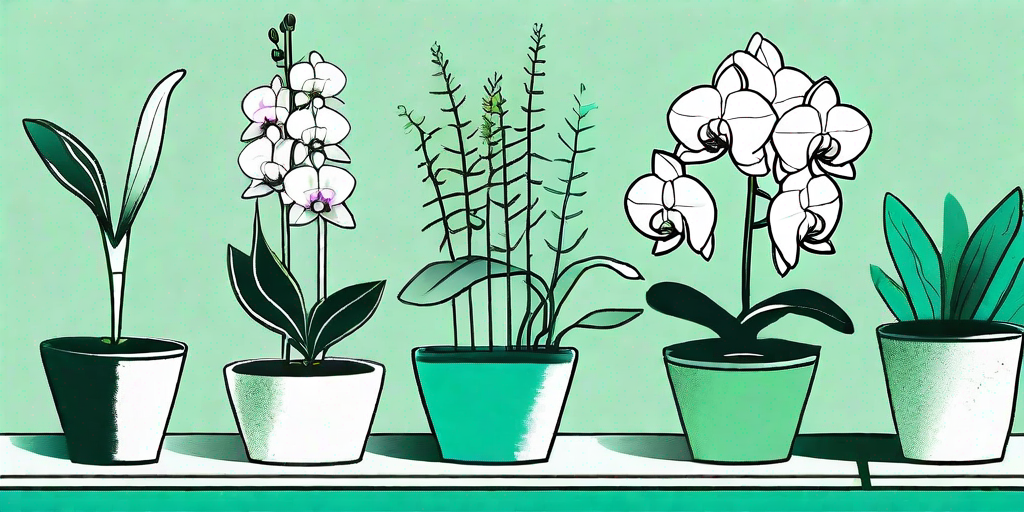
Orchids, the divas of the plant world, are known for their stunning, flamboyant blooms and their equally dramatic post-blooming phase. If you've ever been left with a lifeless-looking orchid after its blooming period, don't despair. This guide will provide you with expert tips on how to revive your orchids and prepare them for their next show-stopping performance.
Understanding Your Orchid's Life Cycle
Before we dive into the nitty-gritty of orchid care, it's important to understand the life cycle of these prima donnas. Unlike some plants that bloom continuously, orchids have a distinct blooming period followed by a rest period. This rest period is not a sign of your plant's impending doom, but rather a much-needed break for the orchid to replenish its energy for the next blooming cycle.
During this rest period, your orchid may lose its leaves and flowers, and its roots may appear shriveled. But fear not, plant parent! This is not a sign of neglect, but a natural part of the orchid's life cycle. Think of it as your orchid taking a well-deserved beauty sleep.
Post-Blooming Care: The Basics
Now that we've established that your orchid is not on the brink of death, let's move on to the basics of post-blooming care. This involves three main steps: watering, feeding, and pruning.
Watering
Orchids are not big drinkers. In fact, overwatering is one of the most common causes of orchid demise. During the rest period, your orchid's water needs are reduced, so you'll want to cut back on the H2O. A good rule of thumb is to water your orchid once a week during this time. And remember, your orchid prefers its drinks lukewarm, not ice-cold or boiling hot.
When watering your orchid, avoid getting water on the leaves as this can lead to rot. Instead, aim for the base of the plant. And don't let your orchid sit in water - make sure any excess water drains away.
Feeding
Just like us, orchids need food to thrive. But while we might crave a juicy burger or a slice of cake, orchids prefer a balanced diet of orchid fertilizer. During the rest period, feed your orchid once a month with a balanced orchid fertilizer. This will provide your plant with the nutrients it needs to prepare for its next blooming cycle.
And remember, when it comes to feeding your orchid, less is more. Overfeeding can lead to salt buildup in the soil, which can harm your plant. So resist the urge to spoil your orchid with too much food.
Pruning
Pruning is the equivalent of a spa day for your orchid. It helps to remove any dead or dying parts of the plant and encourages new growth. After your orchid has finished blooming, you'll want to prune the flower spike down to the base. This will help your orchid conserve energy for its next blooming cycle.
When pruning your orchid, make sure to use a clean, sharp tool to avoid spreading disease. And don't be afraid to give your orchid a good trim - it's tougher than it looks!
Advanced Care: Orchid Reblooming
Once you've mastered the basics of post-blooming care, you might be wondering how to get your orchid to rebloom. This is where things get a bit more complex, but with a bit of patience and care, you can coax your orchid back into bloom.
Temperature
Orchids are a bit like Goldilocks - they like their environment to be just right. Most orchids need a drop in temperature to trigger blooming. This means you'll want to provide your orchid with cooler nights and warmer days. A difference of about 10-15 degrees Fahrenheit between day and night is ideal.
But remember, while your orchid likes a bit of a chill, it doesn't want to freeze. Keep your orchid away from drafts and cold windows during the winter months.
Light
Light is another important factor in getting your orchid to rebloom. Orchids need plenty of indirect light to thrive. A north or east-facing window is ideal. But be careful not to scorch your orchid with too much direct sunlight - remember, it's a diva, not a sunbather.
If you don't have a suitable window, don't worry. Orchids can also thrive under fluorescent lights. Just make sure to give your orchid about 12-14 hours of light a day.
FAQs
- Why is my orchid losing its leaves?
- Leaf loss is a normal part of the orchid's rest period. As long as the leaves are not yellow or spotted, there's no need to worry.
- How often should I repot my orchid?
- Orchids generally need to be repotted every two years. However, if your orchid is growing out of its pot or the potting medium has broken down, it may need to be repotted sooner.
- Why isn't my orchid reblooming?
- There could be several reasons why your orchid isn't reblooming. It could be due to insufficient light, incorrect temperatures, or improper watering or feeding. Review the care tips above to ensure you're providing the right conditions for your orchid.
Conclusion
Reviving your orchids after their blooming period may seem like a daunting task, but with a bit of care and patience, you can help your orchids thrive. Remember, your orchids are divas, and they require a bit of pampering. But with the right care, they'll reward you with a stunning performance.
So don't despair when your orchids lose their blooms. Instead, roll up your sleeves, put on your gardening gloves, and get ready to give your orchids the post-blooming care they deserve. Break a leg!















